

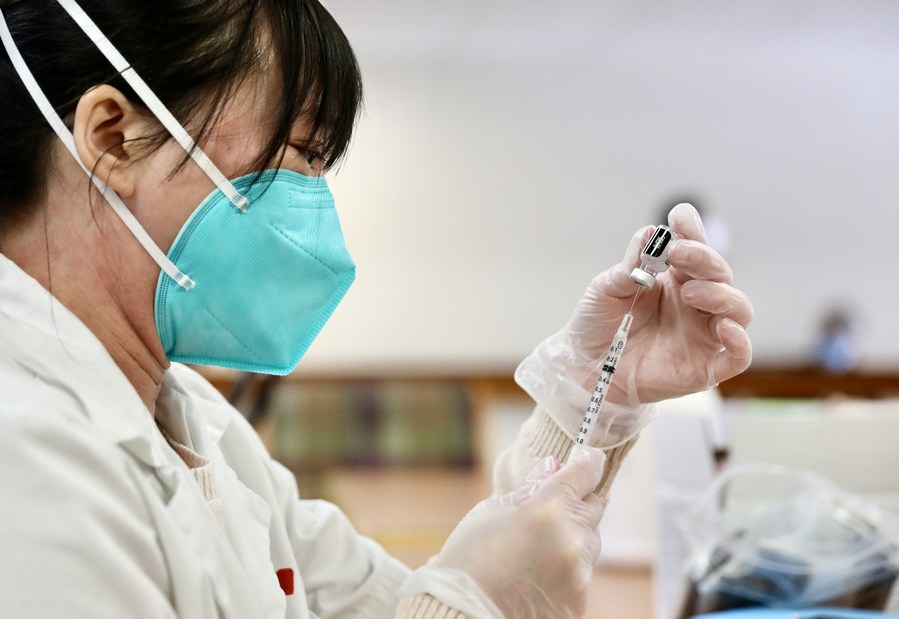
A nurse prepares to inject a dose of COVID-19 vaccine in Pasadena, Los Angeles County, California, the United States, Jan. 15, 2021. (Xinhua)
The vaccine rollout in the United States has drawn great public attention since it started on Dec. 14 last year.
WASHINGTON, Jan. 17 (Xinhua) -- About a month after COVID-19 vaccine rollout began in the United States, it is still impossible for the public and the media to track the rollout of vaccines in nursing homes, assisted living facilities, and other long-term-care facilities (LTCF) in most states, said a latest report of The COVID Tracking Project.
In most states, the details of vaccine rollouts across the country's LTCF remain "closely guarded," according to the report.
The vaccine rollout in the United States has drawn great public attention since it started on Dec. 14 last year.
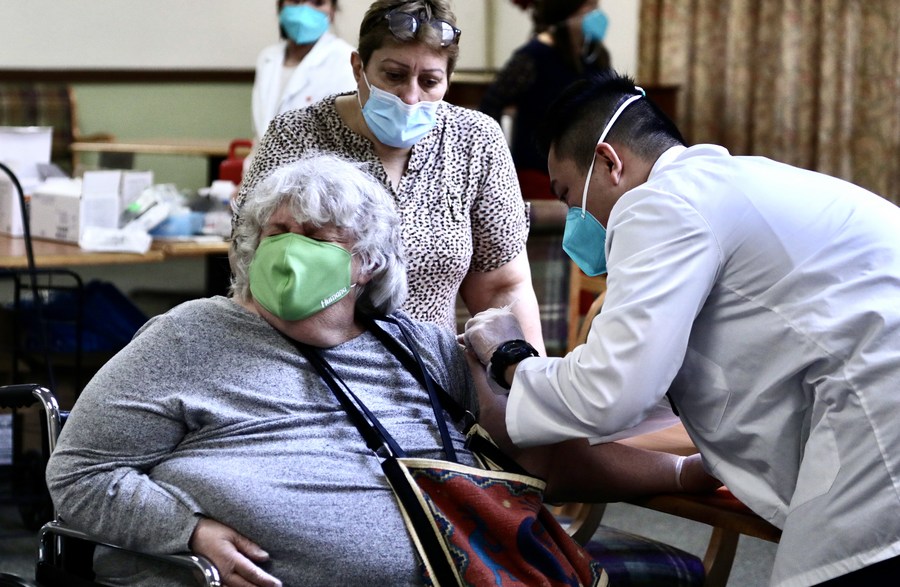
A resident receives a dose of COVID-19 vaccine in Pasadena, Los Angeles County, California, the United States, Jan. 15, 2021. (Xinhua)
Health experts and officials have blamed states for slow vaccine rollout. The country planned to inject 20 million Americans by the end of 2020. However, only about 12.28 million total doses have been administered as of Jan. 15, according to the U.S. Centers for Disease Control and Prevention (CDC).
In the meantime, the lack of vaccine distribution data in LTCF raises public concern.
"For the last month, the public has had minimal visibility into the roll out of COVID-19 vaccines to long-term-care facilities," said The COVID Tracking Project in the report.
Last week, South Carolina published the names of nursing homes and other LTCF where residents and staff have been vaccinated. States and the CDC should follow suit, said the report.
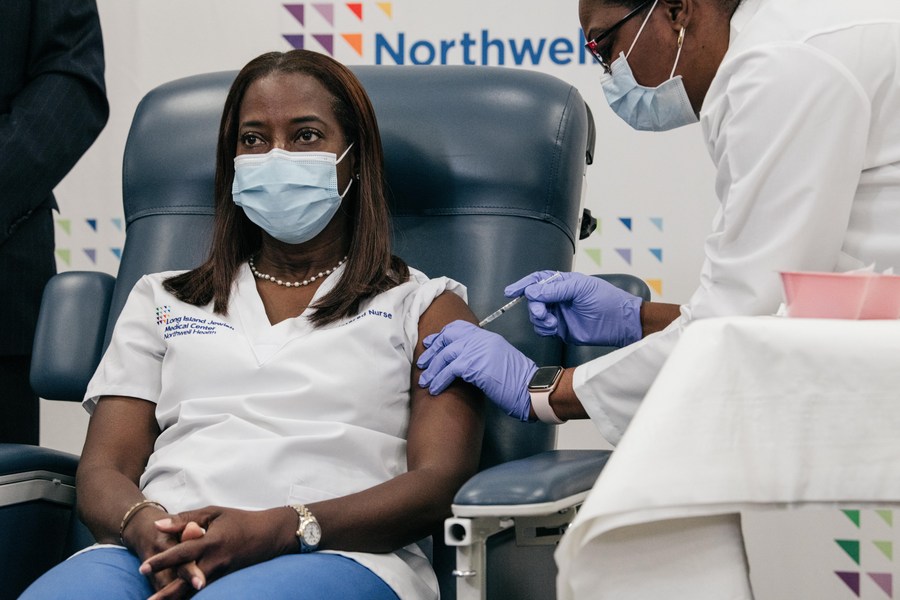
Sandra Lindsay (L), an ICU nurse at Long Island Jewish Medical Center, is inoculated with the COVID-19 vaccine in New York, the United States, on Dec. 14, 2020. (Scott heins/Office of Governor Andrew M. Cuomo/Handout via Xinhua)
"This is the first facility-level vaccination data we've seen from a U.S. state, and it's a crucial step in transparency around vaccine distribution to these most vulnerable populations," said the report.
U.S. LTCF population has been hit hard by the virus since the beginning of the pandemic. According to the tracking project, less than 1 percent of U.S. residents live in LTCF, but deaths among LTCF staff and residents make up at least 37 percent of the nation's total COVID-19 deaths.
As of Jan. 7, more than 133,000 COVID-19 deaths were reported among LTCF residents and staff, according to the tracking project.
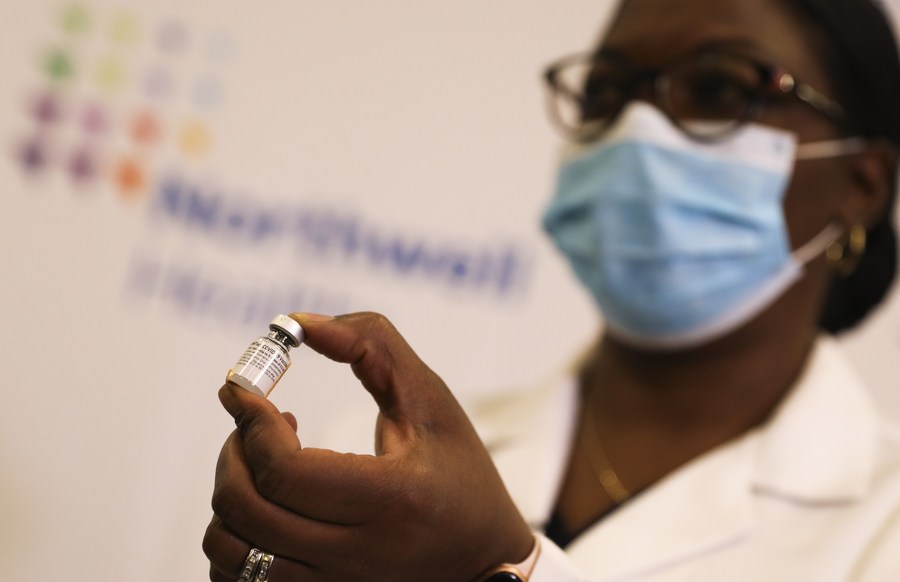
A healthcare worker shows a vial of the COVID-19 vaccine at Long Island Jewish Medical Center in New York, the United States, on Dec. 14, 2020. (Xinhua/Wang Ying)
In early December, the CDC recommended a phased distribution list for early COVID-19 vaccines, with healthcare personnel and LTCF residents in Phase 1a of the vaccination program, and then Phase 1b which includes those aged 75 years and older and frontline essential workers.
Phase 1c includes persons aged 65 to 74 years and aged 16 to 64 with high-risk medical conditions, and essential workers not recommended for vaccination in Phase 1b.
The United States started to administer the first doses of COVID-19 vaccines to LTCF population on Dec. 28.

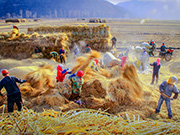 Award-winning photos show poverty reduction achievements in NE China's Jilin province
Award-winning photos show poverty reduction achievements in NE China's Jilin province People dance to greet advent of New Year in Ameiqituo Town, Guizhou
People dance to greet advent of New Year in Ameiqituo Town, Guizhou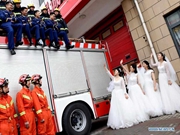 Fire brigade in Shanghai holds group wedding
Fire brigade in Shanghai holds group wedding Tourists enjoy ice sculptures in Datan Town, north China
Tourists enjoy ice sculptures in Datan Town, north China Sunset scenery of Dayan Pagoda in Xi'an
Sunset scenery of Dayan Pagoda in Xi'an Tourists have fun at scenic spot in Nanlong Town, NW China
Tourists have fun at scenic spot in Nanlong Town, NW China Harbin attracts tourists by making best use of ice in winter
Harbin attracts tourists by making best use of ice in winter In pics: FIS Alpine Ski Women's World Cup Slalom
In pics: FIS Alpine Ski Women's World Cup Slalom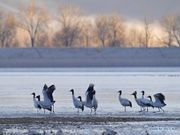 Black-necked cranes rest at reservoir in Lhunzhub County, Lhasa
Black-necked cranes rest at reservoir in Lhunzhub County, Lhasa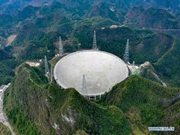 China's FAST telescope will be available to foreign scientists in April
China's FAST telescope will be available to foreign scientists in April